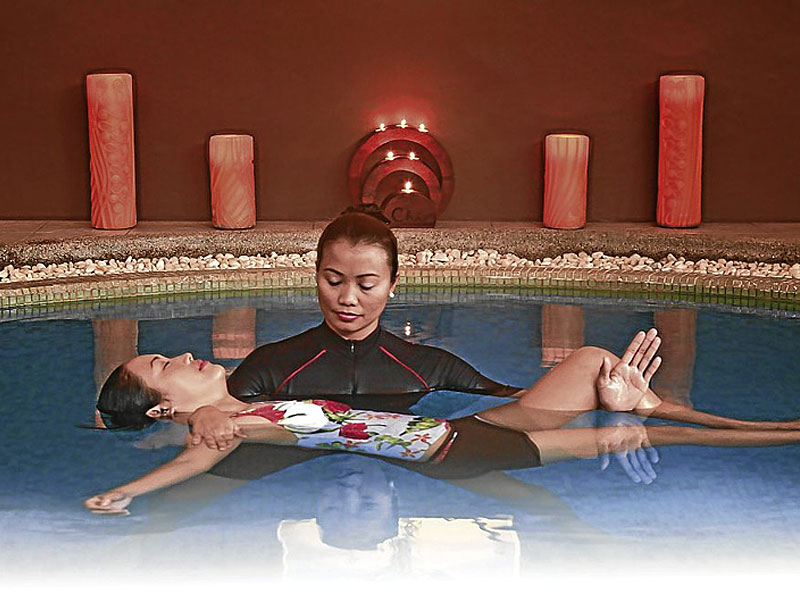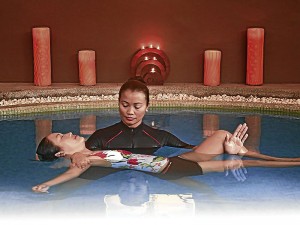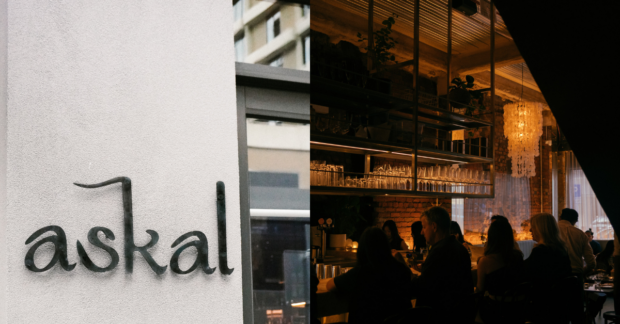In fact, that’s the hardest thing to do. Ask anyone above two years old. Ask anyone who’s known how it is to be in control, and how not to be in control. Ask anyone who’s been hurt and who has hurt someone.
Full surrender—that’s water shiatsu, they say. So when I was invited to try water shiatsu at Shangri-La Mactan Resort and Spa, I was curious, excited, yet doubting a bit. Let go? Hmmm.
I’m adventurous when it comes to massages, the type who can’t say no to a massage marathon (not advisable, though). Every time I’m at Shangri-La Mactan—one of the most relaxing places on Earth, if you ask me—I get curious looking at the plunge pool, where water shiatsu is done.
It is offered only at Shangri-La Mactan’s Chi Spa, and recently, I was told, in a Boracay spa. It demands a really specially trained staff to do water massage—a therapist who can handle any body, be it of light weight or heavy weight; be it 100 lbs or 200 lbs. I belong somewhere in between.
One time, some old (referring to years of acquaintance, not biological age) La Sallite friends asked me to join the climb to Mt. Pulag for a great nature adventure and to see one of the most beautiful sights on earth. No, thanks, I said; my idea of outdoor adventure is “Shang Mactan,” and my chill Nirvana is in the tennis court.
So really, this water shiatsu, here, is my Mt. Pulag.
Tai chi in the water
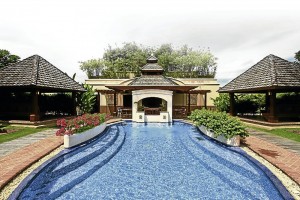 The plunge pool is just slightly above your waist. The therapist or Chi Spa Service Associate, Rady Tumulak, explains what you’re about to do with her. You start doing what seems like tai chi, in the water. You stand in the middle of the pool, legs apart, you feel your balance, and perform very basic tai chi moves—slowly moving your arms, lifting your legs, turning your upper torso. It’s basically acclimatizing yourself in the water with very slow movements.
The plunge pool is just slightly above your waist. The therapist or Chi Spa Service Associate, Rady Tumulak, explains what you’re about to do with her. You start doing what seems like tai chi, in the water. You stand in the middle of the pool, legs apart, you feel your balance, and perform very basic tai chi moves—slowly moving your arms, lifting your legs, turning your upper torso. It’s basically acclimatizing yourself in the water with very slow movements.
Then she asks you to step back towards the side of the pool, your back to the wall, and raise both your legs in the water. You’re floating on your back, you don’t sink or sway because you’re wearing ankle weights. Then you spread your arms as the therapist comes toward you and puts an arm behind your back. She cradles you like a baby and moves you gently, back and forth, side to side, in the water. You allow your body to go limp and light.
Your total surrender has begun.
With your eyes closed, you let your other senses take over. You feel only your weightless body, your skin warmed in the lukewarm water. The continuous sound of rippling water lulls you to near sleep. But you don’t sleep because you want to relish the experience of your body floating so smoothly.
As you float, the therapist stretches your body initially. Then she puts you in various positions—fetal, supine, or on your side (you’re wearing ear plugs to prevent the water from sipping into your ears). She alternately massages you or applies acupressure on various muscles and joints, or does shiatsu massage.
This goes on for about one hour and 40 minutes. (I can’t take two straight hours of massage; I feel oppression when I lie still that long without talking.) But in your weightlessness and in the quiet, you don’t keep track of time. In fact, you lose all sense of time and place.
 You lose the sense of urgency of living. It’s as if you have unplugged yourself and let the pressures, concerns and burdens ooze out into the water.
You lose the sense of urgency of living. It’s as if you have unplugged yourself and let the pressures, concerns and burdens ooze out into the water.
Your only anchor is the water, where you continue to float, and through it, your therapist.
Therapist Rady is trim and of slight build, yet it’s a wonder how she can maneuver your body in water. She can sometimes carry in the water very heavy or overweight men.
Someone told me that in some cases, the stiff body of a petite woman can even be heavier or harder to move in the water than that of a 200-lb man. Some believe it reflects the person’s psychic burden or woes.
You really have to let go when you’re in the water; the water shiatsu session is deeper than relaxation. Rady said that the one-hour-40-minute session we had could be equivalent to eight hours of sleep.
Rady also said how some of the guests she’s had could just let go and let tears flow in the water.
That wasn’t the case with me; I didn’t even get close to tears. I felt happy in the water.
Four-figure sum
It’s really an experience like no other. Not all Chi Spas offer water shiatsu. The Chi Spa at Shangri-La Mactan has guests coming annually from abroad, like Hong Kong, just to have the water shiatsu. (The cost is a high four-figure sum.)
More affordable but also relaxing is the Chi Balance, which combines acupressure with relaxing massage. It seeks your balance and energy flow.
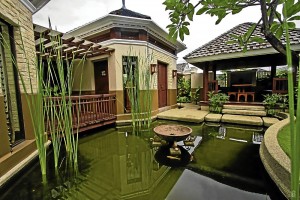 As spaholics know, you start the massage with a foot scrub. At Chi Spa, we had the scrub made of sandalwood granules, coconut milk and lemongrass scent.
As spaholics know, you start the massage with a foot scrub. At Chi Spa, we had the scrub made of sandalwood granules, coconut milk and lemongrass scent.
As Chi explains in its literature, Chi follows the traditional Chinese philosophy of “chi” being the universal life force that “governs well-being and personal vitality.” The chi must flow in the body unimpeded; otherwise, one falls ill. Movement is necessary to eliminate blockages in the body—thus, massage, exercise and, for the mind, meditation.
Chi Spa also follows the Chinese belief in five elements—metal, water, wood, fire and earth. They are used to keep the balance of negative and positive energy in the body (yin and yang).
To determine your element, at the start of each session, you fill up a questionnaire. Based on your answers or your element—whether you’re fire, earth, and so on—the therapist chooses the right oil for you.
The Chi Balance massage, in its use of element oils, embodies this philosophy.
I’ve been used to hot stone massages. I find the Chi’s Healing Stone Massage different in how the therapist extends the use of warm stones all the way to your fingertips and toes. Healing Stone Massage is thermotherapy (use of heat) with gliding massage strokes using therapeutic oils.
The therapist uses the stones to massage your whole body—following the meridian flow—and leaves the stones on the strategic points, including your hands and feet. They use stones from the Himalayas. You feel invigorated after.
On previous visits, I had the Palina Hilot massage—two therapists/two pairs of healing hands simultaneously doing the massage strokes, in perfect unison. As they do, the native rain maker—a bamboo contraption that simulates the patter of rain—soothes you with its continuous tinkling.
The Palina Hilot was the massage I kept going back to Chi for, until I discovered the water shiatsu.
Extensive menu
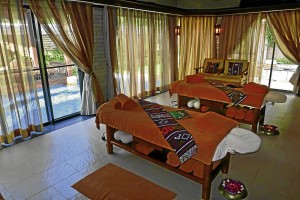 The Chi Spa massage menu is extensive, from the Philippine Hilot Massage (which is the most popular among its local and foreign clients) and Thai massage to Yin Yang Harmonizing Massage for couples. There are also body scrubs (like the Mountain Tsampa Rub, a barley rub), soaks (coconut milk, lotus milk), and body wraps (cashmere and silk body treatment, for instance).
The Chi Spa massage menu is extensive, from the Philippine Hilot Massage (which is the most popular among its local and foreign clients) and Thai massage to Yin Yang Harmonizing Massage for couples. There are also body scrubs (like the Mountain Tsampa Rub, a barley rub), soaks (coconut milk, lotus milk), and body wraps (cashmere and silk body treatment, for instance).
The Chi Spa in Mactan also has treatments indigenous to the Philippines, using local plants and herbs, inspired by native wellness traditions. These include the Palina Hilot, the Sampaguita Sensation/Body Bliss (with organic virgin coconut oil), and barako coffee bean scrub.
There are offerings that combine two or more treatments—perfect for travelers.
Since the Chi Spa opened at Shangri-La Mactan in 2005—the first resort Chi Spa in the world—it has been drawing locals and tourists alike who are ready to pay for quality time and treatment in its lush villas. It has found its niche in the harnessing of traditional Asian and Chinese health beliefs and products.
You can have massage anywhere, even in your home. What makes Chi Spa distinctive, apart from its menu, are the little unique amenities, such as the buttery cashmere robe, the sweet melon-scented chilled towels, the jade cups… women like us can go on and on.
Beyond that, there’s the trained staff. According to Area Director of Spa, New Zealander Jeanette Haua, the Chi Spa’s strong brand presence owes itself to the stringent policies and procedures Chi observes, to ensure that the Chi experience is of the same standard any place you go among the Shangri-La properties.
Haua was with the Chi Spa in Fiji before this stint in Mactan.
“The staff is trained for three to four months, exposed to all treatments, and are gradually put in the operations,” she said. “It takes a month or two before they are on their own (in the sessions), and two years before they get their certification, based on performance appraisal and guest feedback.”
That’s a lot of hard work and training just to help you surrender, let go, and release.
Of course, it works. A day after our return from Shangri-La Mactan, back in the tennis court, I was still wobbly and trying hard to recover my timing. My hitting partner turned to me and said, “Bakit para kang bulalo?” (Hard to translate: Bulalo is a favorite dish with soft, tender beef, and the bone marrow mushy.)

